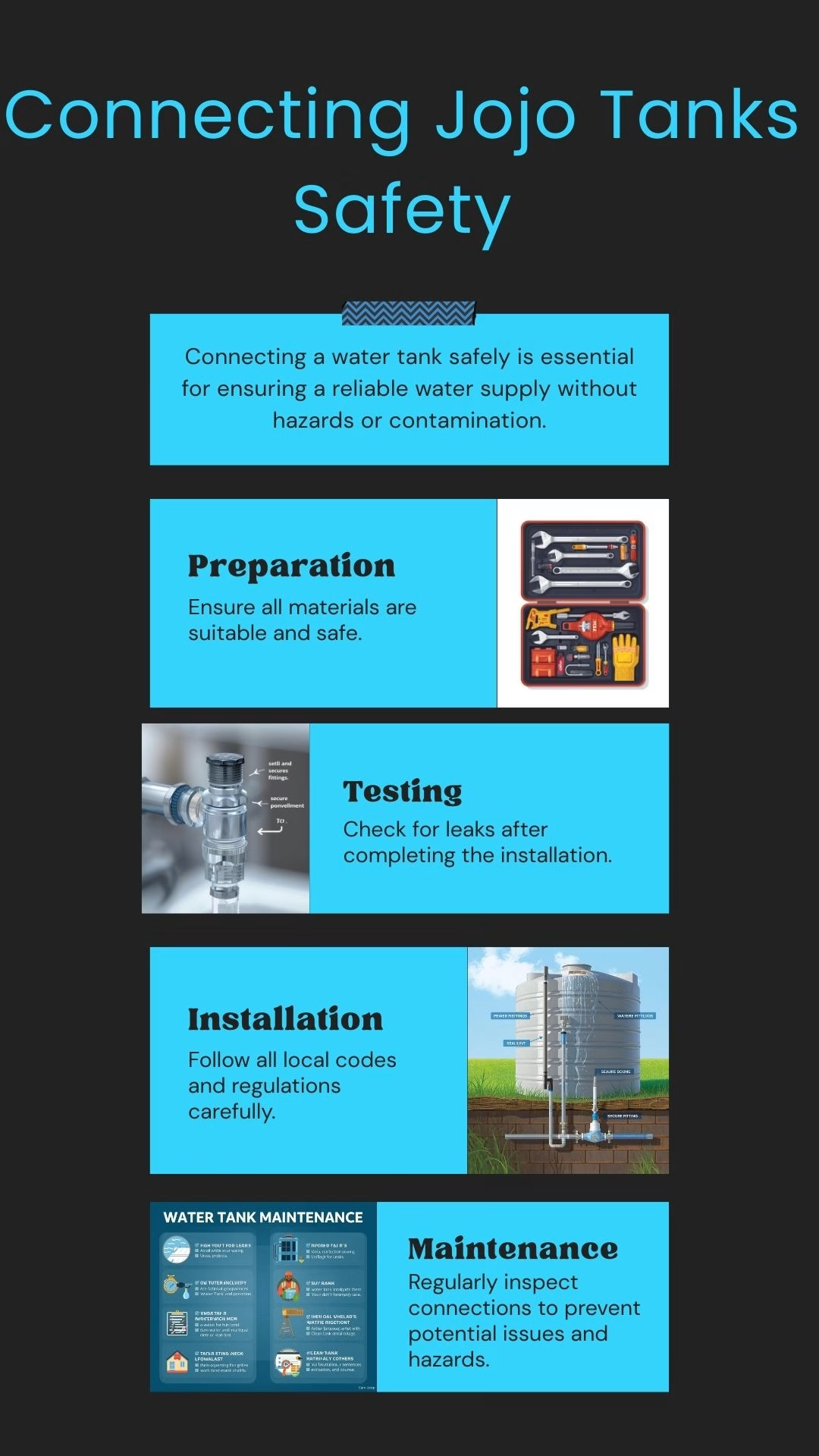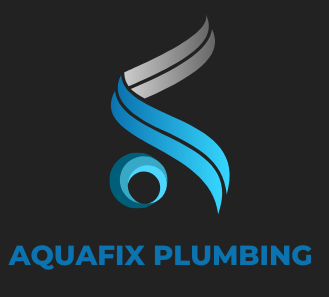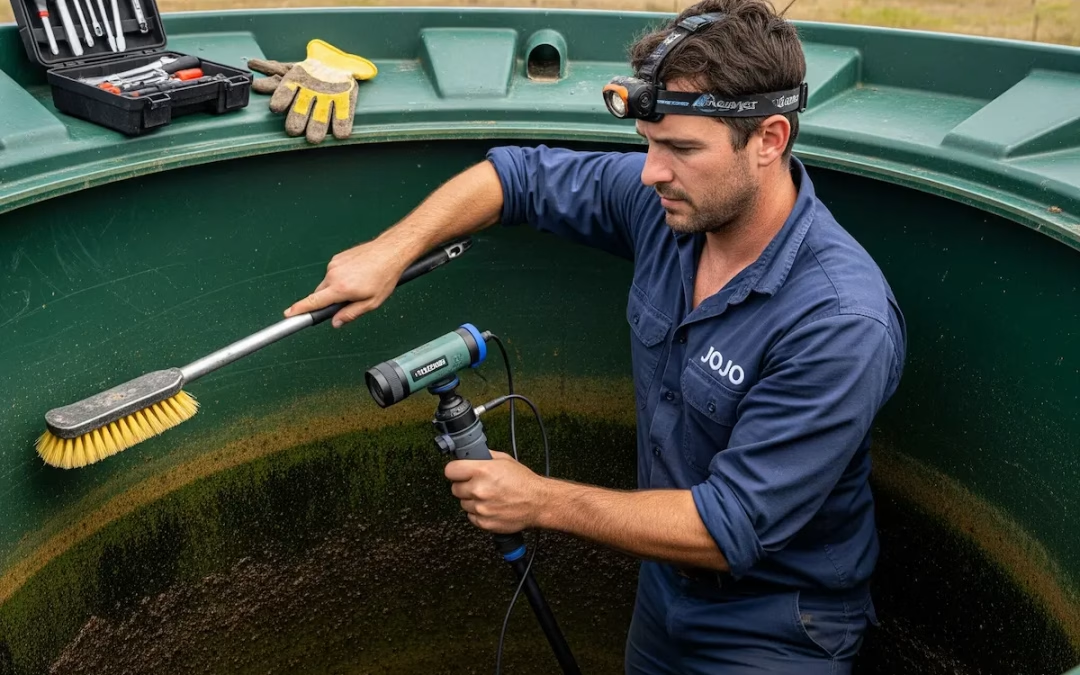Durban JoJo tank connection
For Durban homeowners, a JoJo tank is the foundation of a reliable home water backup system. While many use it for rainwater harvesting, its true value lies in its seamless integration with your property’s plumbing. This connection provides a dependable, on-demand water supply, offering peace of mind and continuity during unexpected municipal water interruptions, pipe repairs, or scheduled maintenance. This guide outlines the essential steps to safely and professionally connect your water storage solution, empowering you to take greater control of your water security.
Understanding jojo tanks
Before you begin the water tank connection process, it’s crucial to familiarize yourself with the foundational parts of your water storage system. This knowledge will make sure you work safely and install all the essential plumbing components correctly.
Types of JoJo Water Tanks
JoJo tanks are renowned for their durability, but they come in two primary forms tailored for specific water installation solutions:
- Above-Ground Tanks: These are the most common JoJo tank installations and are ideal for accessible spaces. They are typically placed on a level surface next to your house or business. Their setup is generally straightforward, as all water tank accessories and components are visible and easily reached.
- Underground Tanks: Preferred when space is limited or for aesthetic reasons, these water storage tanks are discreetly buried beneath the ground. They require a more complex and professional installation, as planning for access points, pipes, and water tank pumps is critical.
Essential components
Regardless of the tank type, a few key parts are vital for a seamless and safe plumbing integration with your main water supply:
-
While connecting a JoJo tank is a rewarding DIY project, some situations require a licensed professional. Knowing when to call a plumber can save you time, money, and potential headaches.
-
Complex Plumbing or System Upgrades: If your property has a unique or complex plumbing layout, or if you are integrating a larger system for an entire household, it is best to consult with a professional plumber. They can ensure the system is installed correctly to handle the pressure and flow demands.
-
Local Regulations and Permits: In Durban, some larger installations may require specific permits or need to adhere to municipal bylaws. A licensed plumber will be up-to-date on all local regulations and can ensure your installation is compliant.
-
When in Doubt: If you feel unsure at any point during the process, or if you encounter an unexpected issue like a leak, do not hesitate to call a professional. Your safety and the integrity of your home’s water system are the top priorities.
-
2. Essential Tools and Materials for Your JoJo Tank Installation
Before you start, gathering the right tools and water tank installation materials is crucial for a smooth and safe project. This DIY water tank hookup is a rewarding task, and having everything on hand will help you avoid unnecessary trips to the hardware store.
Estimated Time and Cost
- Time: A basic installation should take a competent DIY enthusiast approximately 2-4 hours.
- Cost: While costs can vary based on the specific components you choose, you can estimate a total cost for materials and an automatic pump to be in the range of R4,500 to R11,000+. For those hiring a professional, plumber labour rates typically range from R450 to R900 per hour in Durban.
tools you will need for Durban JoJo tank connection
- Pipe Wrenches: You will need at least two—one to hold fittings steady and one to tighten.
- Teflon Tape (Thread Seal Tape): This is a non-negotiable supply for creating watertight seals on all threaded pipe connections.
- Drill: A power drill with a variety of bits will be needed for securely mounting water pumps, brackets, and other hardware.
- Hacksaw or PVC Pipe Cutter: For making clean, straight cuts on your chosen water supply pipe.
- Tape Measure: To accurately measure pipe lengths and component placement for a professional-looking finish.
- Screwdrivers: Both Phillips and flathead screwdrivers are typically required for various fittings and mounts.
- Level: To ensure your pump and pipes are mounted correctly and for proper gravity feed where applicable.
4. Common Mistakes to Avoid
Even a great plan can have pitfalls. Avoid these common mistakes. They can compromise your system’s safety and efficiency.
- Skipping Backflow Prevention: This is a critical error. A backflow prevention device is not optional. It is a non-negotiable safety component. Without it, you risk contaminating the public water supply. This is a serious health and legal issue.
- Using Improper Fittings: Your connections must be strong. They must handle high pressure and outdoor conditions. Using cheap or incorrect fittings leads to leaks. It can cause pressure loss or total system failure. Always use quality PVC or PEX parts.
- Ignoring Pressure Differences: The pressure from your automatic pump must match your home’s plumbing. Mismatching pressures can stress your pipes. This often leads to leaks or bursts. Check with a professional if you are unsure about the settings.
- Incorrect Pump Placement: The pump needs a solid, level surface. It should be close to the tank. Incorrect placement can damage the pump. It may have to work harder, or it could become unstable over time.
5. Maintenance Tips for Longevity
A properly connected system needs care. Regular maintenance ensures your JoJo tank and its components function efficiently for years. This simple routine will protect your investment.
-
Regular inspection of pipes and valves: Every few months, check all visible pipes and fittings. Look for signs of corrosion, wear, or small leaks. A proactive check can prevent a major issue later on.
-
Cleaning and flushing the tank: Even with a filter, some sediment can accumulate in the tank. Periodically drain and flush the tank to remove this buildup. This keeps your water fresh and prevents debris from clogging your pump.
-
Seasonal checks for pumps and connectors: Durban’s weather can be unpredictable. Check your pump and connectors before and after the rainy season. Ensure all components are secure and free from damage. Listen for any unusual noises from your pump, as this could indicate a problem.
When to Call a Professional
While connecting a JoJo tank is a rewarding DIY project, some situations require a licensed professional. Knowing when to call a plumber can save you time, money, and potential headaches.
-
Complex Plumbing or System Upgrades: If your property has a unique or complex plumbing layout, or if you are integrating a larger system for an entire household, it is best to consult with a professional plumber. They can ensure the system is installed correctly to handle the pressure and flow demands.
-
Local Regulations and Permits: In Durban, some larger installations may require specific permits or need to adhere to municipal bylaws. A licensed plumber will be up-to-date on all local regulations and can ensure your installation is compliant.
-
When in Doubt: If you become unsure at any point during the process, or if you encounter an unexpected issue like a leak, do not hesitate to call a professional. Your safety and the integrity of your home’s water system are the top priorities.
JoJo Tank Maintenance Reminder
Input your tank's installation date to get a personalized maintenance schedule.

If you’d prefer a hassle-free setup, our team can handle the entire process for you. Learn more about our professional installation options here: JoJo tank installation services.


Recent Comments